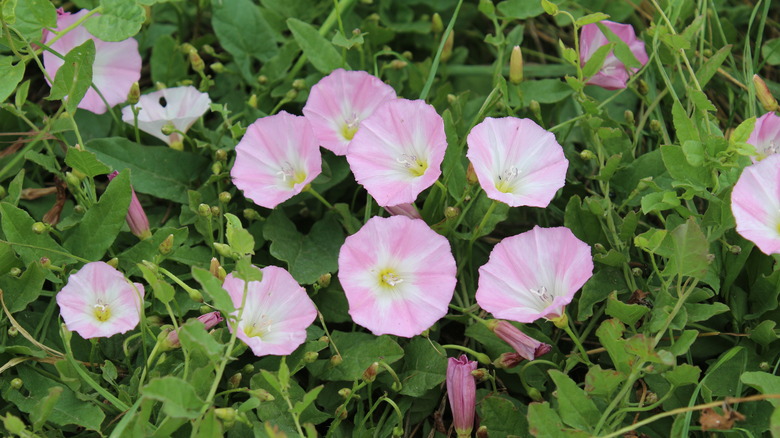In the realm of gardening, there’s one unrelenting adversary that can test the mettle of even the most seasoned horticulturalists: bindweed. Contrary to its seemingly harmless name, bindweed — which usually comes in the form of field bindweed (Convolvulus arvensis) and hedge bindweed (Calystegia sepium) — is a formidable perennial intruder that can swiftly transform a flourishing garden into a field of green warfare. Understanding what makes this such a hardy opponent is paramount to devising an effective strategy to keep it out of your garden.
Bindweed’s complex root system deeply infiltrates the soil with unparalleled efficiency. Its rapid growth rate allows it to easily outpace neighboring plants in its relentless quest for sunlight and resources. Its delicate funnel-shaped flowers create an illusion of innocence that belies its destructive nature. As these bloom, they disperse an abundance of seeds that remain in the soil for decades, ready to spring to life at your garden’s detriment.
Taking up arms against bindweed demands patience and commitment. You must employ a multi-faceted, hands-on approach to maximize your chances of eradicating it for good. One thing you can do to arrest an ongoing invasion is gently excavate the soil around the weed using a shovel or fork, following the elusive white root runners that extend deep into the earth. Remember, complete root removal is paramount to prevent regrowth. Luckily, there are other things you can do besides uprooting to get rid of bindweed.
Bindweed removal and prevention methods

To stop bindweed from making your garden its home, apply a thick layer (about three inches) of organic mulch, such as straw, grass clippings, or wood chips. This will help suppress growth by depriving it of sunlight. Ensure the mulch is dense enough to deter the weed’s emergence while allowing your desired plants to flourish.
A natural, non-toxic weed-killing solution you can combine with other methods involves spraying bindweed with undiluted white vinegar. This method requires precision, however, as you must target it to weaken its growth and ensure your garden plants aren’t damaged. During the scorching summer months, you can also cover infested areas with clear plastic sheeting, harnessing the sun’s heat to cook the bindweed roots beneath the soil. This method, known as solarization, can be a potent tool in your arsenal. If you’re getting rid of bindweed in large patches, you can also pour boiled water at the base of each plant. This will burn and kill off the weeds, although you may need to repeat the process until they are eradicated.
Long-term strategies to prevent regrowth
Vanquishing bindweed is just the beginning; preventing its triumphant return requires ongoing dedication. Before planting, solarize the soil again to address any remaining bindweed and sterilize the soil of other potential pests and diseases. At this point, it’s also wise to cultivate dense ground covers like bunch grasses, shrubs, and other vigorous plants that leave little room for bindweed to establish a foothold. These plants can not only compete effectively but also create shade that inhibits bindweed growth. That said, don’t forget to routinely inspect your garden and promptly remove any new bindweed shoots before their long roots snake 10 feet into the ground.
Continue applying organic gardening mulch as needed, reinforcing your garden’s defense against bindweed reinfestation. Over time, the mulch will break down, enriching the soil and fostering a healthier ecosystem for your desired plants. By implementing a multifaceted strategy that encompasses manual removal, strategic methods, and preventive measures, you can free your garden from the clutches of this persistent invader.